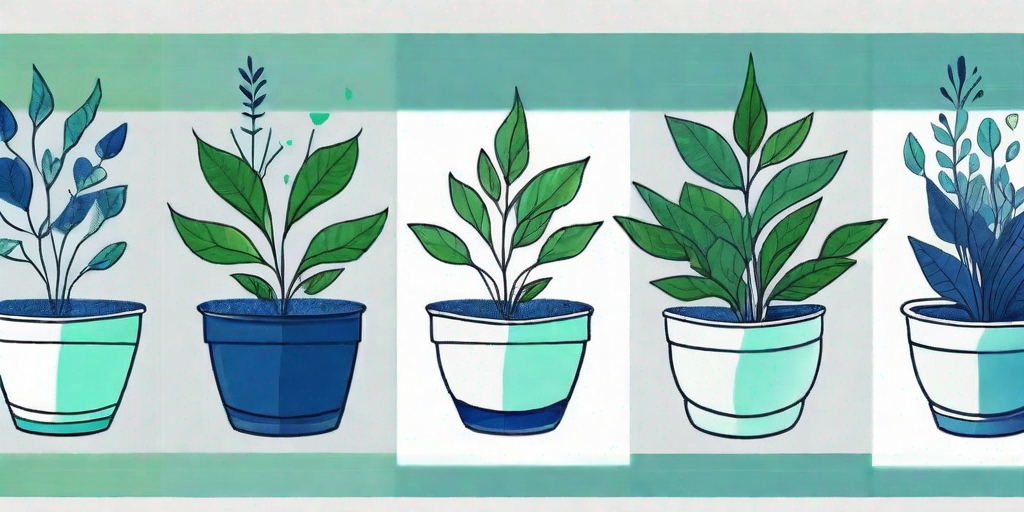
Welcome to the world of home gardening, where we transform the ordinary into the extraordinary. Today, we're going to delve into the realm of indigo, the plant that has been coloring our lives (and our jeans) for centuries. But we're not just talking about any old plant here. We're talking about growing your very own indigo right at home. Sounds like a blue dream, right? Let's dive in!
The Indigo Plant: A Brief Introduction
Before we get our hands dirty, let's take a moment to appreciate the indigo plant. Indigofera tinctoria, as the botanists like to call it, is a shrub that's native to Asia. It's been used for thousands of years to produce a deep, rich blue dye. But don't be fooled by its humble appearance. This plant is a real powerhouse, and it's about to become your new favorite houseplant.
Indigo plants are generally hardy and can grow in a variety of climates. They prefer full sun and well-drained soil, but they're not too picky. They're also legumes, which means they're great for improving soil fertility. So not only will you get a beautiful plant and a source of natural dye, but you'll also be doing your bit for the environment. Talk about a win-win!
How to Grow Indigo at Home
Step 1: Getting Your Hands on Indigo Seeds
First things first, you'll need to get your hands on some indigo seeds. You can find these online or at a local nursery. Just make sure they're from a reputable source. You wouldn't want to end up with a pot full of weeds, would you?
Once you have your seeds, you'll need to soak them in warm water for a day or two. This will help to soften the hard outer shell and speed up the germination process. After soaking, drain the water and let the seeds dry out before planting.
Step 2: Planting Your Indigo Seeds
Now that your seeds are ready, it's time to plant them. Fill a pot with well-draining soil and plant the seeds about 1/4 inch deep. Keep the soil moist but not waterlogged, and place the pot in a sunny spot. With a bit of patience, you should start to see sprouts in a couple of weeks.
Once your seedlings are about 6 inches tall, you can transplant them into a larger pot or directly into your garden. Just remember to give them plenty of space to grow. Indigo plants can get quite large!
Caring for Your Indigo Plant
Watering and Feeding
Indigo plants like their soil to be moist but not waterlogged. Overwatering can lead to root rot, which is as nasty as it sounds. So, water your plant regularly but make sure the soil drains well.
As for feeding, indigo plants aren't too demanding. A balanced fertilizer every couple of months should do the trick. Just remember to follow the instructions on the packet. Overfeeding can lead to lush, green growth but little dye production. And we wouldn't want that, would we?
Pruning and Harvesting
Pruning your indigo plant will help to keep it healthy and encourage more growth. You can start pruning once your plant is about a year old. Just remember to keep those prunings. They're full of that beautiful blue dye!
Harvesting your indigo for dye is a bit more involved, but we'll get to that later. For now, just know that you'll need to wait until your plant is at least two years old before you start harvesting.
Creating Indigo Dye from Your Plant
Now, this is where the magic happens. Creating indigo dye from your plant involves a process called fermentation. Don't worry, it's not as complicated as it sounds. All you need is a bucket, some water, and a bit of patience.
First, you'll need to harvest your indigo leaves. Then, you'll need to soak them in water for a couple of days. During this time, the leaves will ferment and release their blue dye. After fermentation, you'll need to remove the leaves and add a reducing agent to the water. This will turn the blue dye into a form that can bind to fabric. And voila! You've got yourself some homemade indigo dye.
Frequently Asked Questions
Can I grow indigo indoors?
Absolutely! Indigo can be grown indoors as long as it gets plenty of sunlight. Just remember to keep an eye on the watering. Indoor plants can dry out faster than outdoor plants.
How long does it take for an indigo plant to produce dye?
Patience is key when it comes to indigo. It can take up to two years for an indigo plant to produce enough leaves for dye extraction. But trust us, it's worth the wait!
Can I use indigo dye on any type of fabric?
Indigo dye works best on natural fibers like cotton, linen, and silk. Synthetic fibers may not take up the dye as well.
Conclusion
So there you have it, folks. From blue jeans to blue dreams, growing indigo at home is not only possible, but it's also a whole lot of fun. With a bit of patience and care, you too can experience the joy of creating your own natural dye. So why not give it a go? Your wardrobe (and the environment) will thank you.















